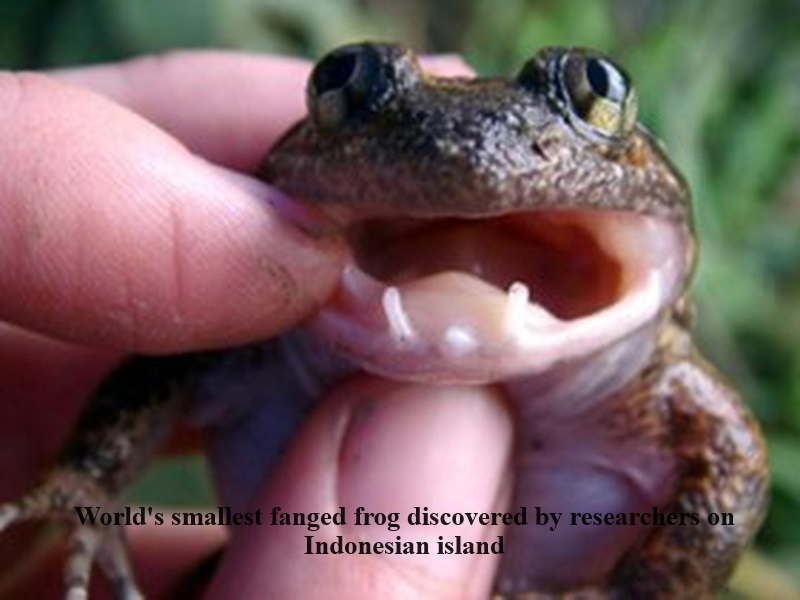
Earth is home to more than 6,000 frog species, and scientists continuously explore to discover new ones. Some frogs possess fangs, akin to snakes, though they are not known to bite or inject venom. Instead, certain large frogs with fangs use them for tearing through the tough shells of their prey or deterring other frogs.
In a recent study, a team of researchers identified a new frog species named Limnonectes phyllofolia, known as “leaf-nesters” due to their unique nesting behavior. Unlike most frogs, these leaf-nesters do not lay their eggs in water. The study suggests that they construct their nests on tree leaves or moss-covered stones located far from water sources.
Lead author Jeff Frederick, a postdoctoral researcher at the Field Museum in Chicago, described the new species as particularly small, about the size of a quarter. This contrasts with other fanged frogs on the same island, which can be much larger, some weighing up to two pounds.
The research team, hailing from the McGuire Lab at Berkeley and collaborating with the Bogor Zoology Museum, discovered these frogs on Sulawesi, a mountainous island in Indonesia known for its diverse habitats, including rainforests, cloud forests, and volcanoes.
The researchers stumbled upon the leaf-nesters while hiking through the forest, finding frog egg nests on the leaves of tree saplings and moss-covered boulders. Most amphibians, including frogs, typically lay eggs encased in jelly in water to prevent them from drying out. However, the leaf-nesters break this pattern by keeping their eggs on leaves.
According to Frederick, the frog parents may coat the eggs with substances that keep them moist and protected from infections. The team observed attending frogs sitting on leaves near their nests, suggesting a unique and previously unseen nesting behavior.
This discovery not only adds a new species to the diverse world of frogs but also highlights the fascinating nesting strategies that contribute to the incredible biodiversity found on Sulawesi.

Post Your Comments